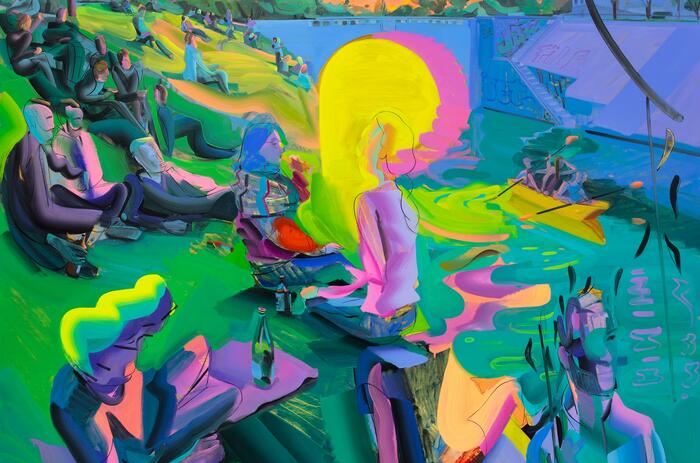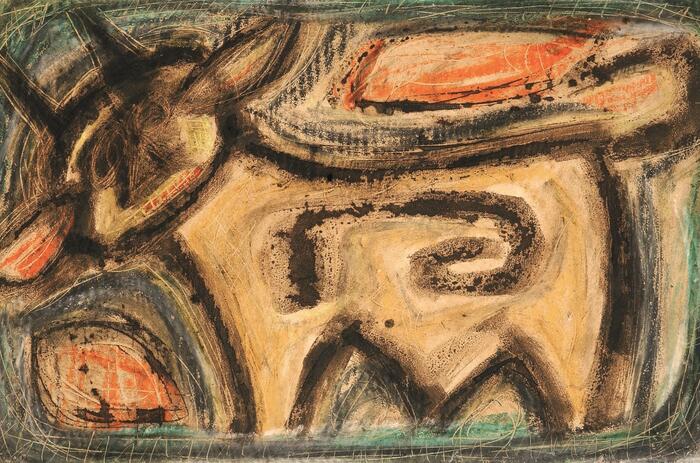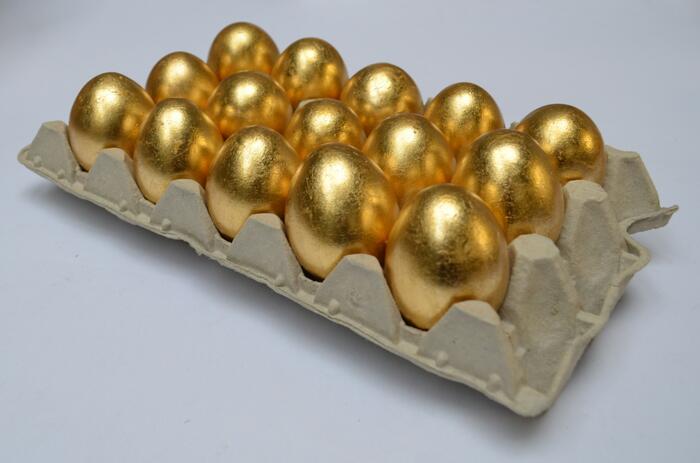GABRIEL OROZCO’S RECENT WORK AT KURIMANZUTTO
Gabriel Orozco’s latest exhibition at kurimanzutto presents recent drawings, paintings and sculptures intricately connected to the places where he lives.

The drawings in Diario de Plantas, made in notebooks small enough to fit in the palm of a hand, record the imprints and sketches of leaves to trace an open-ended cartography of organic growth.
Orozco began this series in Tokyo during the COVID pandemic, documenting the leaves that caught his attention or fell at his feet; then, the diary traveled with him to Acapulco and Mexico City, where he was working on the master plan for a large public project to renovate the city’s central Chapultepec Park. From the pages of his Diario we get a glimpse of the artist’s daily practice as well as his enduring interest in landscape and the natural environment. The traces and imprints made with gouache, tempera, ink and graphite suggest deliberate improvisation, where the delicate textures and shapes of each specimen guide his exploration of organic structures and color.
The sculptures included in the exhibition were made in Mexico, carved from local stones such as red volcanic tezontle and white marble. Every die is made by using a compass to trace the same concentric circles on a structural grid, which is drawn on a 30 x 30-centimeter cube and then carved on each of its six faces. The geometric diagram remains a constant, but the volumes and voids vary from one sculpture to another; like an alphabet that is used to tell a different story each time, the dice emerge from the same pattern but are never the same. By utilizing these drawings to cut away at a solid form, the artist unveils the motion embedded in matter through circles, the rotation dormant in the plane but running through the mass of the stone.
In his most recent paintings, Orozco articulates the seemingly implausible encounter of two figures, both produced around the 15th century: Leonardo Da Vinci’s ink notebook drawing, Vitruvian Man, and the monumental stone sculpture of Coatlicue, the Aztec goddess of life and death. Characterized by her skirt of writhing snakes, pendulous breasts and a necklace of human hearts, the Coatlicue is believed to represent duality, the struggle of opposites and the embodiment of cosmic forces connected to fertility, creation and destruction. Coatlicue’s expanded body overlaps with the western idealized proportions of the human body portrayed in Leonardo’s Vitruvian Man.
Exhibition by Gabriel Orozco.
Until March 23rd, 2024.
kurimanzutto. Gob. Rafael Rebollar 94, col. San Miguel Chapultepec 11850, Mexico City, México.
May interest you

Karen Huber gallery presents artist Andrew Holmquist’s first solo exhibition in Mexico, Looking in all the wrong places.

Karen Huber gallery presents artist Andrew Holmquist’s first solo exhibition in Mexico, Looking in all the wrong places.

Four Minutes of Darkness, Eduardo Sarabia's inaugural solo exhibition at OMR, unfolds as a cartography of the artist's intricate visual language and marks the second in a trilogy of exhibitions dedicated to the total eclipse of the sun.

Playing with closed eyes, 100 years of surrealism is an exhibition at RGR Gallery that invites visitors to review through a non-historicist approach of the movement. Curated by Gabriela Rangel and guest curator Verónica Rossi.
100 YEARS OF SURREALISM: CELEBRATING A DIFFERENT WAY TO LOOK AT LIFE

The Center for Art, Research and Alliance’s spring 2024 exhibition presents an intergenerational, feminist dialogue between artists Paloma Contreras Lomas (b. Mexico, 1991) and Ines Doujak (b. Austria, 1959). The show opens March 2 and will remain on view through May 12, 2024.
PALOMA CONTRERAS LOMAS AND INÉS DOUJAK
The Center for Art, Research and Alliance’s spring 2024 exhibition presents an intergenerational, feminist dialogue between artists Paloma Contreras Lomas (b. Mexico, 1991) and Ines Doujak (b. Austria, 1959). The show opens March 2 and will remain on view through May 12, 2024.

Americas Society opened Part II of El Dorado: Myths of Gold, an exhibition showcasing artworks by more than 60 artists that challenge, reinforce and question the continuity of the myth of El Dorado into the present.
AMERICAS SOCIETY PRESENTS PART II OF EXHIBITION EL DORADO
Americas Society opened Part II of El Dorado: Myths of Gold, an exhibition showcasing artworks by more than 60 artists that challenge, reinforce and question the continuity of the myth of El Dorado into the present.

Carlos Rosales-Silva is the Spring 2024’s Artist-in-Residence at Bemis Center for Contemporary Art.
CARLOS ROSALES-SILVA IS BEMIS CENTER’S ARTIST-IN-RESIDENCE ON SPRING 2024
Carlos Rosales-Silva is the Spring 2024’s Artist-in-Residence at Bemis Center for Contemporary Art.

The team of the General Directorate of Visual Arts and the Museo Universitario Arte Contemporáneo of the UNAM appointed Tatiana Cuevas Guevara, curator and art historian, as the next director of the MUAC.
TATIANA CUEVAS GUEVARA IS THE NEW DIRECTOR OF MUAC
The team of the General Directorate of Visual Arts and the Museo Universitario Arte Contemporáneo of the UNAM appointed Tatiana Cuevas Guevara, curator and art historian, as the next director of the MUAC.

War and Peace: A Poetics of Gesture is the exhibition of Beatriz Gonzalez at MUAC (Museo Universitario Arte Contemporáneo), which reviews the artist's work. It is curated by Cuahtémoc Medina and Natalia Gutiérrez.
WAR AND PEACE: BEATRIZ GONZALEZ AT MUAC
War and Peace: A Poetics of Gesture is the exhibition of Beatriz Gonzalez at MUAC (Museo Universitario Arte Contemporáneo), which reviews the artist's work. It is curated by Cuahtémoc Medina and Natalia Gutiérrez.

Karen Huber gallery presents artist Andrew Holmquist’s first solo exhibition in Mexico, Looking in all the wrong places.

Four Minutes of Darkness, Eduardo Sarabia's inaugural solo exhibition at OMR, unfolds as a cartography of the artist's intricate visual language and marks the second in a trilogy of exhibitions dedicated to the total eclipse of the sun.

Playing with closed eyes, 100 years of surrealism is an exhibition at RGR Gallery that invites visitors to review through a non-historicist approach of the movement. Curated by Gabriela Rangel and guest curator Verónica Rossi.
100 YEARS OF SURREALISM: CELEBRATING A DIFFERENT WAY TO LOOK AT LIFE

The Center for Art, Research and Alliance’s spring 2024 exhibition presents an intergenerational, feminist dialogue between artists Paloma Contreras Lomas (b. Mexico, 1991) and Ines Doujak (b. Austria, 1959). The show opens March 2 and will remain on view through May 12, 2024.
PALOMA CONTRERAS LOMAS AND INÉS DOUJAK
The Center for Art, Research and Alliance’s spring 2024 exhibition presents an intergenerational, feminist dialogue between artists Paloma Contreras Lomas (b. Mexico, 1991) and Ines Doujak (b. Austria, 1959). The show opens March 2 and will remain on view through May 12, 2024.

Americas Society opened Part II of El Dorado: Myths of Gold, an exhibition showcasing artworks by more than 60 artists that challenge, reinforce and question the continuity of the myth of El Dorado into the present.
AMERICAS SOCIETY PRESENTS PART II OF EXHIBITION EL DORADO
Americas Society opened Part II of El Dorado: Myths of Gold, an exhibition showcasing artworks by more than 60 artists that challenge, reinforce and question the continuity of the myth of El Dorado into the present.

Carlos Rosales-Silva is the Spring 2024’s Artist-in-Residence at Bemis Center for Contemporary Art.
CARLOS ROSALES-SILVA IS BEMIS CENTER’S ARTIST-IN-RESIDENCE ON SPRING 2024
Carlos Rosales-Silva is the Spring 2024’s Artist-in-Residence at Bemis Center for Contemporary Art.

The team of the General Directorate of Visual Arts and the Museo Universitario Arte Contemporáneo of the UNAM appointed Tatiana Cuevas Guevara, curator and art historian, as the next director of the MUAC.
TATIANA CUEVAS GUEVARA IS THE NEW DIRECTOR OF MUAC
The team of the General Directorate of Visual Arts and the Museo Universitario Arte Contemporáneo of the UNAM appointed Tatiana Cuevas Guevara, curator and art historian, as the next director of the MUAC.

War and Peace: A Poetics of Gesture is the exhibition of Beatriz Gonzalez at MUAC (Museo Universitario Arte Contemporáneo), which reviews the artist's work. It is curated by Cuahtémoc Medina and Natalia Gutiérrez.
WAR AND PEACE: BEATRIZ GONZALEZ AT MUAC
War and Peace: A Poetics of Gesture is the exhibition of Beatriz Gonzalez at MUAC (Museo Universitario Arte Contemporáneo), which reviews the artist's work. It is curated by Cuahtémoc Medina and Natalia Gutiérrez.

Karen Huber gallery presents artist Andrew Holmquist’s first solo exhibition in Mexico, Looking in all the wrong places.

Four Minutes of Darkness, Eduardo Sarabia's inaugural solo exhibition at OMR, unfolds as a cartography of the artist's intricate visual language and marks the second in a trilogy of exhibitions dedicated to the total eclipse of the sun.

Playing with closed eyes, 100 years of surrealism is an exhibition at RGR Gallery that invites visitors to review through a non-historicist approach of the movement. Curated by Gabriela Rangel and guest curator Verónica Rossi.
100 YEARS OF SURREALISM: CELEBRATING A DIFFERENT WAY TO LOOK AT LIFE

The Center for Art, Research and Alliance’s spring 2024 exhibition presents an intergenerational, feminist dialogue between artists Paloma Contreras Lomas (b. Mexico, 1991) and Ines Doujak (b. Austria, 1959). The show opens March 2 and will remain on view through May 12, 2024.
PALOMA CONTRERAS LOMAS AND INÉS DOUJAK
The Center for Art, Research and Alliance’s spring 2024 exhibition presents an intergenerational, feminist dialogue between artists Paloma Contreras Lomas (b. Mexico, 1991) and Ines Doujak (b. Austria, 1959). The show opens March 2 and will remain on view through May 12, 2024.

Americas Society opened Part II of El Dorado: Myths of Gold, an exhibition showcasing artworks by more than 60 artists that challenge, reinforce and question the continuity of the myth of El Dorado into the present.
AMERICAS SOCIETY PRESENTS PART II OF EXHIBITION EL DORADO
Americas Society opened Part II of El Dorado: Myths of Gold, an exhibition showcasing artworks by more than 60 artists that challenge, reinforce and question the continuity of the myth of El Dorado into the present.

Carlos Rosales-Silva is the Spring 2024’s Artist-in-Residence at Bemis Center for Contemporary Art.
CARLOS ROSALES-SILVA IS BEMIS CENTER’S ARTIST-IN-RESIDENCE ON SPRING 2024
Carlos Rosales-Silva is the Spring 2024’s Artist-in-Residence at Bemis Center for Contemporary Art.

The team of the General Directorate of Visual Arts and the Museo Universitario Arte Contemporáneo of the UNAM appointed Tatiana Cuevas Guevara, curator and art historian, as the next director of the MUAC.
TATIANA CUEVAS GUEVARA IS THE NEW DIRECTOR OF MUAC
The team of the General Directorate of Visual Arts and the Museo Universitario Arte Contemporáneo of the UNAM appointed Tatiana Cuevas Guevara, curator and art historian, as the next director of the MUAC.

War and Peace: A Poetics of Gesture is the exhibition of Beatriz Gonzalez at MUAC (Museo Universitario Arte Contemporáneo), which reviews the artist's work. It is curated by Cuahtémoc Medina and Natalia Gutiérrez.
WAR AND PEACE: BEATRIZ GONZALEZ AT MUAC
War and Peace: A Poetics of Gesture is the exhibition of Beatriz Gonzalez at MUAC (Museo Universitario Arte Contemporáneo), which reviews the artist's work. It is curated by Cuahtémoc Medina and Natalia Gutiérrez.

Karen Huber gallery presents artist Andrew Holmquist’s first solo exhibition in Mexico, Looking in all the wrong places.

Four Minutes of Darkness, Eduardo Sarabia's inaugural solo exhibition at OMR, unfolds as a cartography of the artist's intricate visual language and marks the second in a trilogy of exhibitions dedicated to the total eclipse of the sun.

Playing with closed eyes, 100 years of surrealism is an exhibition at RGR Gallery that invites visitors to review through a non-historicist approach of the movement. Curated by Gabriela Rangel and guest curator Verónica Rossi.
100 YEARS OF SURREALISM: CELEBRATING A DIFFERENT WAY TO LOOK AT LIFE

The Center for Art, Research and Alliance’s spring 2024 exhibition presents an intergenerational, feminist dialogue between artists Paloma Contreras Lomas (b. Mexico, 1991) and Ines Doujak (b. Austria, 1959). The show opens March 2 and will remain on view through May 12, 2024.
PALOMA CONTRERAS LOMAS AND INÉS DOUJAK
The Center for Art, Research and Alliance’s spring 2024 exhibition presents an intergenerational, feminist dialogue between artists Paloma Contreras Lomas (b. Mexico, 1991) and Ines Doujak (b. Austria, 1959). The show opens March 2 and will remain on view through May 12, 2024.

Americas Society opened Part II of El Dorado: Myths of Gold, an exhibition showcasing artworks by more than 60 artists that challenge, reinforce and question the continuity of the myth of El Dorado into the present.
AMERICAS SOCIETY PRESENTS PART II OF EXHIBITION EL DORADO
Americas Society opened Part II of El Dorado: Myths of Gold, an exhibition showcasing artworks by more than 60 artists that challenge, reinforce and question the continuity of the myth of El Dorado into the present.

Carlos Rosales-Silva is the Spring 2024’s Artist-in-Residence at Bemis Center for Contemporary Art.
CARLOS ROSALES-SILVA IS BEMIS CENTER’S ARTIST-IN-RESIDENCE ON SPRING 2024
Carlos Rosales-Silva is the Spring 2024’s Artist-in-Residence at Bemis Center for Contemporary Art.

The team of the General Directorate of Visual Arts and the Museo Universitario Arte Contemporáneo of the UNAM appointed Tatiana Cuevas Guevara, curator and art historian, as the next director of the MUAC.
TATIANA CUEVAS GUEVARA IS THE NEW DIRECTOR OF MUAC
The team of the General Directorate of Visual Arts and the Museo Universitario Arte Contemporáneo of the UNAM appointed Tatiana Cuevas Guevara, curator and art historian, as the next director of the MUAC.

War and Peace: A Poetics of Gesture is the exhibition of Beatriz Gonzalez at MUAC (Museo Universitario Arte Contemporáneo), which reviews the artist's work. It is curated by Cuahtémoc Medina and Natalia Gutiérrez.
WAR AND PEACE: BEATRIZ GONZALEZ AT MUAC
War and Peace: A Poetics of Gesture is the exhibition of Beatriz Gonzalez at MUAC (Museo Universitario Arte Contemporáneo), which reviews the artist's work. It is curated by Cuahtémoc Medina and Natalia Gutiérrez.

Karen Huber gallery presents artist Andrew Holmquist’s first solo exhibition in Mexico, Looking in all the wrong places.

Four Minutes of Darkness, Eduardo Sarabia's inaugural solo exhibition at OMR, unfolds as a cartography of the artist's intricate visual language and marks the second in a trilogy of exhibitions dedicated to the total eclipse of the sun.

Playing with closed eyes, 100 years of surrealism is an exhibition at RGR Gallery that invites visitors to review through a non-historicist approach of the movement. Curated by Gabriela Rangel and guest curator Verónica Rossi.
100 YEARS OF SURREALISM: CELEBRATING A DIFFERENT WAY TO LOOK AT LIFE

The Center for Art, Research and Alliance’s spring 2024 exhibition presents an intergenerational, feminist dialogue between artists Paloma Contreras Lomas (b. Mexico, 1991) and Ines Doujak (b. Austria, 1959). The show opens March 2 and will remain on view through May 12, 2024.
PALOMA CONTRERAS LOMAS AND INÉS DOUJAK
The Center for Art, Research and Alliance’s spring 2024 exhibition presents an intergenerational, feminist dialogue between artists Paloma Contreras Lomas (b. Mexico, 1991) and Ines Doujak (b. Austria, 1959). The show opens March 2 and will remain on view through May 12, 2024.

Americas Society opened Part II of El Dorado: Myths of Gold, an exhibition showcasing artworks by more than 60 artists that challenge, reinforce and question the continuity of the myth of El Dorado into the present.
AMERICAS SOCIETY PRESENTS PART II OF EXHIBITION EL DORADO
Americas Society opened Part II of El Dorado: Myths of Gold, an exhibition showcasing artworks by more than 60 artists that challenge, reinforce and question the continuity of the myth of El Dorado into the present.

Carlos Rosales-Silva is the Spring 2024’s Artist-in-Residence at Bemis Center for Contemporary Art.
CARLOS ROSALES-SILVA IS BEMIS CENTER’S ARTIST-IN-RESIDENCE ON SPRING 2024
Carlos Rosales-Silva is the Spring 2024’s Artist-in-Residence at Bemis Center for Contemporary Art.

The team of the General Directorate of Visual Arts and the Museo Universitario Arte Contemporáneo of the UNAM appointed Tatiana Cuevas Guevara, curator and art historian, as the next director of the MUAC.
TATIANA CUEVAS GUEVARA IS THE NEW DIRECTOR OF MUAC
The team of the General Directorate of Visual Arts and the Museo Universitario Arte Contemporáneo of the UNAM appointed Tatiana Cuevas Guevara, curator and art historian, as the next director of the MUAC.

War and Peace: A Poetics of Gesture is the exhibition of Beatriz Gonzalez at MUAC (Museo Universitario Arte Contemporáneo), which reviews the artist's work. It is curated by Cuahtémoc Medina and Natalia Gutiérrez.
WAR AND PEACE: BEATRIZ GONZALEZ AT MUAC
War and Peace: A Poetics of Gesture is the exhibition of Beatriz Gonzalez at MUAC (Museo Universitario Arte Contemporáneo), which reviews the artist's work. It is curated by Cuahtémoc Medina and Natalia Gutiérrez.




